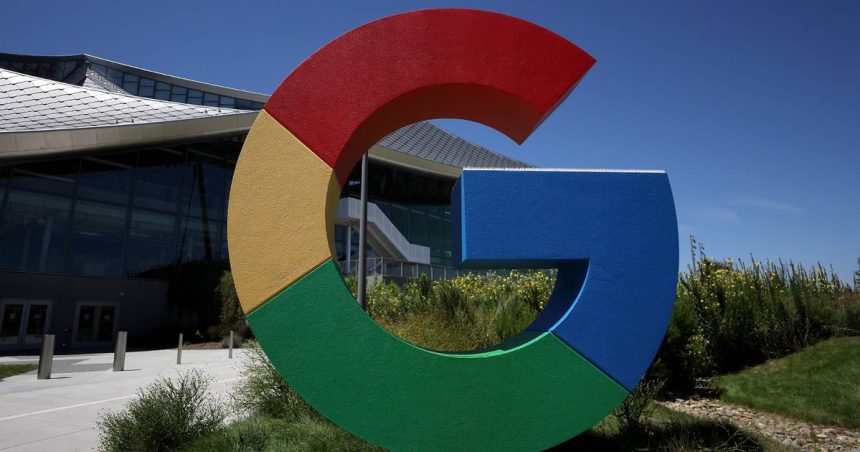It’s true that Google, the world’s largest advertising company, can see nearly every ad dollar and impression that moves through the digital ecosystem.
But that alone doesn’t constitute a monopoly, the company’s lawyers argued on the first day of its defense last Friday.
Google brought its arguments to a close this week, finishing off three weeks of testimony from both the advertising giant and the Department of Justice, which has alleged that Google has engaged in anticompetitive behavior and monopolistic practices in the ad-tech sector. Now, the industry waits: closing arguments won’t be held until right before Thanksgiving, so don’t expect a ruling until after that.
The DOJ, which rested its case last week before Google began its own, spent two weeks sharing hours of expert testimony and introducing into evidence endlessly quotable emails from Google executives describing their views on the company’s increasingly powerful position in the ad-tech ecosystem.
“If we execute…we’ll be able to crush other networks, and that’s our goal,” David Rosenblatt, Google’s former president of global display advertising, was quoted as saying in an internal note shared with Google employees in 2009.
The DOJ focused on arguing that Google used its foothold in the ad-tech market to maintain a “trifecta of monopolies,” DOJ attorney Julia Tarver Wood said in opening statements. Google, meanwhile, argued that it faces plenty of competition and that its business decisions that the DOJ has characterized as anticompetitive are intended to create a safer ecosystem for its users.
In broad strokes, the DOJ argued the following points.
Google monopolized ad servers, the technology publishers use to run digital advertising: Google’s publisher ad server has a 91% global market share, according to evidence introduced by the DOJ, and the court heard from ad-tech companies and publishers who said that Google’s ad server is practically unavoidable. And execs from several ad-tech companies testified about the difficulties they faced competing with Google.
Google monopolized ad exchanges, the auction technology that publishers use to connect with advertisers: Execs from several publishers testified that Google’s ad exchange, AdX, has the largest market share in the industry, and among the highest take rates. And they testified that using AdX was largely unavoidable because of the DOJ’s third major point…
Google tied its ad-tech businesses together through exclusive deals: A majority of the DOJ’s argument was focused on Google giving its own ad-tech businesses exclusivity. Publishers can only access real-time bidding data if they used Google’s ad server, and they can only access Google’s advertisers if they used Google’s ad exchange, the DOJ demonstrated.
Get marketing news you’ll actually want to read
Marketing Brew informs marketing pros of the latest on brand strategy, social media, and ad tech via our weekday newsletter, virtual events, marketing conferences, and digital guides.
“Our goal should be all or nothing—use AdX as your SSP or don’t get access to our demand,” Scott Spencer, a longtime Google ads employee who left the company last year, wrote in a 2013 email that was repeatedly shown in the courtroom.
A fourth claim initially laid out by the DOJ—that Google monopolized advertising ad networks—practically disappeared after the first day of the trial, and was only occasionally mentioned when witnesses were asked about the differences between Google’s ad network, Google Ads, and Google’s demand-side platform, DV360. That could be because, despite its dominance, Google still faces some formidable competition in that particular slice of the industry, fighting for ad dollars alongside companies like Meta and The Trade Desk.
What was also left unaddressed is why Google is so attractive to so many advertisers; it owns the world’s most popular search engine (which a federal judge ruled is an illegal monopoly last month; Google has said it will appeal that decision) and the most popular streaming platform, YouTube. Google’s user data, much of which is collected via its Chrome browser, was also not mentioned, despite being a crucial part of why Google is so good at advertising. None of us would be stuck in a courtroom in Alexandria, Virginia, if it wasn’t for Google’s success in the consumer market.
Google’s lawyers, of course, are attempting to rebut these claims. The defense opened last Friday by arguing that the ad market is competitive and unveiling a giant spaghetti monster diagram of ad-tech companies and functions, presumably in an effort to demonstrate the interconnectedness of the ad ecosystem. That exhibit elicited audible laughter—and some puzzled looks—in court.
Google’s lawyers also tried to position the company as a willing partner, mentioning its recent programmatic deal with X, and its failed bid for Netflix’s advertising business, which it lost to Microsoft.
Per Bjorke, director of product management for ad traffic quality at Google, and Alejandro Borgia, director of product management for ad safety at Google, appeared as witnesses, testifying that keeping Google exclusive is designed to protect against fraud and bad actors, according to The Verge.
Read the full article here










